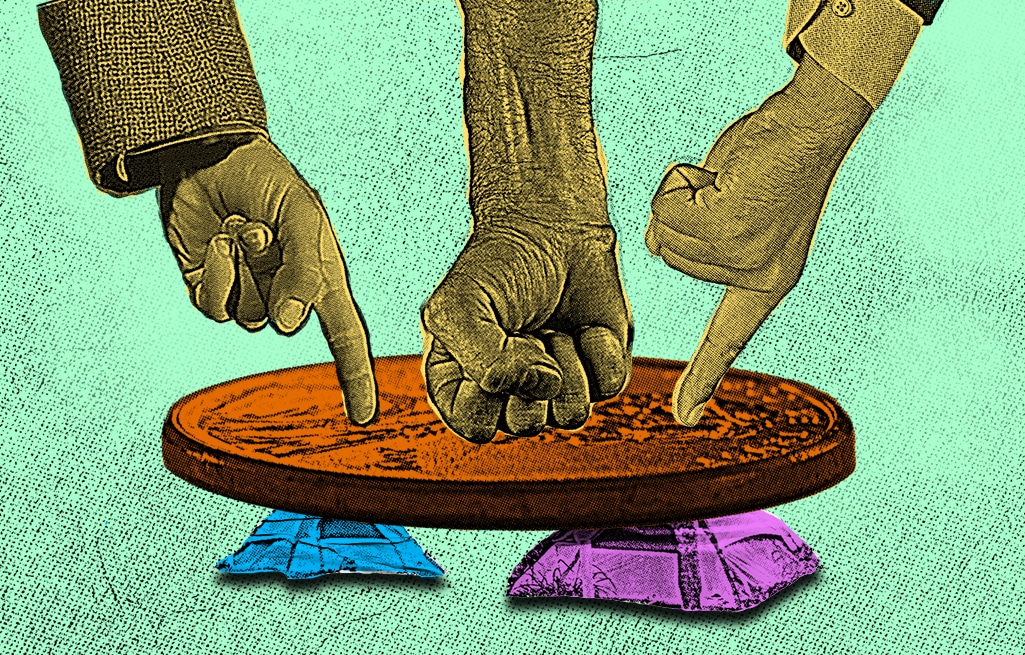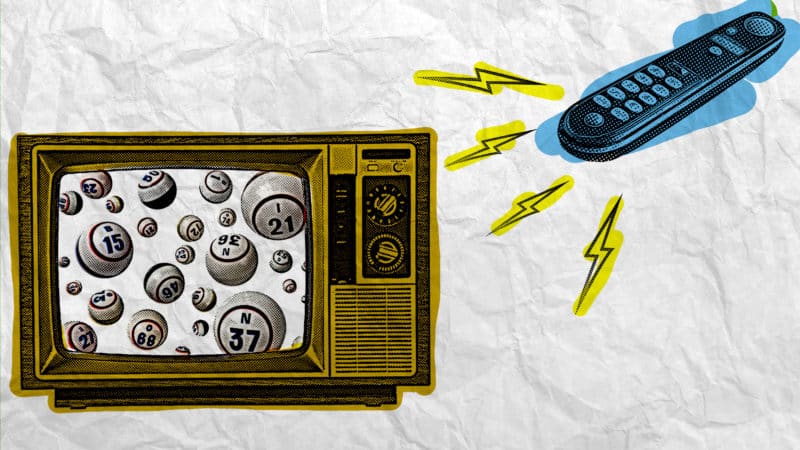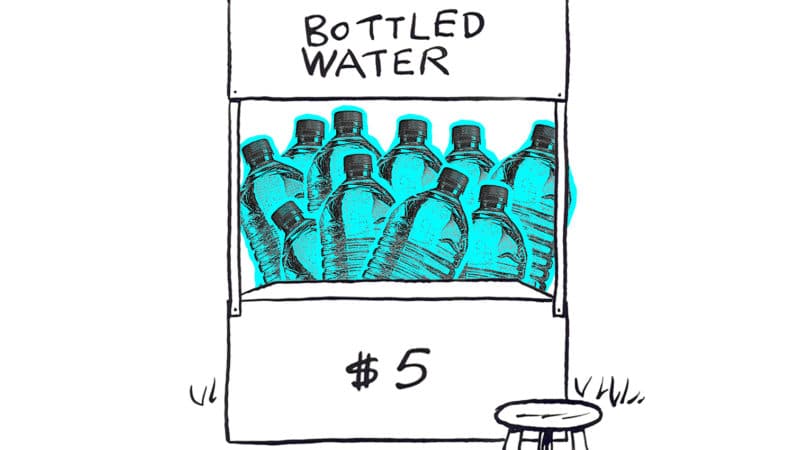Taxes are being used to fight rather than solve homelessness across the country; it’s making life more difficult for those who are unhoused, and isn’t cheap on the taxpayer either.
By Andrew Fraieli
It costs taxpayers $31,065 a year to criminalize a single person suffering from homelessness — through enforcement of unconstitutional anti-panhandling laws, hostile architecture, police raids of homeless encampments, and just general harassment. The cost of providing them supportive housing — $10,051 per year.
Multiple reports over the course of the decade have said the cost of criminalizing homelessness surpasses what the cost of housing and helping these people would be. Florida, though, continues to be guilty of putting vast amounts of tax dollars towards this criminalization.
The Tax Cost of Arresting
A report by Rethink Homelessness in 2014 looked at Central Florida counties Seminole, Orange and Osceola. They analyzed the costs of “arrest, incarceration, medical and psychiatric emergency room use and inpatient hospitalizations” for a cohort of about 30 chronically homeless individuals in each county — a total of 107 throughout.
They found in Osceola county alone, over ten years, 37 chronically homeless people were arrested 1,250 times, or about four times per person per year.
The booking cost of each arrest was $104, costing taxpayers $130,000; the arrests led to 61,896 days of incarceration at a daily cost of $80, costing the community $4,951,680; this totaled to $6,417,905 over ten years, or $641,791 per year for those 37 people.
Cycling these people of all three counties through this system was costing the counties $31,065 per person per year — almost the exact cost of paying each person $15 an hour for a full time job.
The cost of supportive housing, giving these people a place to live and the help they need, whether medical or with finding a job, would have been far less though at an average of $10,051 per person per year, “a community cost reduction of 68%,” the report continued.
Utah is a famous example of this supportive housing working, having brought their chronically homeless population from 2,000 people in 2005, to less than 200 in 2016.
The Cycle of Jail and Homelessness
The cohort of unhoused in those Central Florida counties were arrested repeatedly, not just once though. They cycled in and out of jail for the same offenses, no better off. According to a 2013 study — Jail Incarceration, Homelessness, and Mental Health: A National Study — this is a cycle of incarceration, and it can perpetuate itself.
A loop of jail time and homelessness, the report says, “Incarceration has been noted to increase the risk of homelessness” as it can weaken community ties, limit employment opportunities, and make it more difficult to get public housing.
“Punishing people for sitting on a milk crate is just another way Miami is criminalizing homelessness.”
“This bidirectional association between homelessness and incarceration may result in a certain amount of cycling between public psychiatric hospitals, jails and prisons, and homeless shelters or the street,” the report elaborates, supporting the same findings as Rethink Homelessness.
Part of the source of this cycle of incarceration are the laws and different forms of enforcement by the police and city that criminalize homelessness.
They can be subtle, used when a direct arrest may not be possible, and put more costs to the taxpayers and away from more long-term solutions.
The State’s Hostile Solutions
A 2017 report, Tent City USA by the National Law Center on Homelessness and Poverty, elaborates — initially referring to incarceration costs — that “cities also spend thousands of dollars on fences, bars, rocks, spikes, and other ‘hostile’ or ‘aggressive’ architecture, deliberately making certain areas of their community inaccessible to homeless persons without shelter.”
A passive form of enforcement, hostile architecture is metal bars dividing benches, bolts on stone steps, spikes or stones cemented on ledges or on the ground — ploys targeting the homeless, aiming to take away the few choices they have for sleeping and forcing the taxpayers to unwittingly pay for it.
One Florida example was in West Palm Beach in 2019. A city events venue played loops of the children’s songs “Raining Tacos” and “Baby Shark” all night long to drive away the people who would sleep there at night, The Palm Beach Post reported.
“[Customers] shouldn’t have to trip over bodies when they or community events staffers come to set up at 5 a.m., or when caterers or a bride leave at midnight,” Leah Rockwell, the Parks and Recreation director, told the Palm Beach Post in defense of their tactic. “We are not forcing individuals to stay on the patio of the pavilion to listen to the music,” she elaborated.
Cost-wise, Santa Cruz, California spent $1,000 per speaker box for a similar solution where they emitted a high-pitch sound under a local bridge to deter loiterers.
There are still many city ordinances that are more direct — criminalizing urinating in public or sleeping in public parks for example. But the Tent City USA report continues that more outreach and alternatives for the unhoused is the better solution, and that neither direct nor passive criminalization is necessary.
“Many communities state they need criminalization ordinances to provide law enforcement with a ‘tool’ to push people to accept services, but providing outreach backed with resources for real alternatives is the far better, proven approach,” the report said.
An example given is when Miami changed their police officer’s approach to handling homeless and mental health issues. It made such an impact, the White House took notice in a press release on “Disrupting the Cycle of Incarceration” in 2016.
“Miami-Dade, Florida found that 97 people with serious mental illness accounted for $13.7 million in services over 4 years, spending more than 39,000 days in either jail, emergency rooms, state hospitals, or psychiatric facilities in their county. In response, the county provided key mental health de-escalation training to their police officers and 911 dispatchers.”
It continues that over five years, the Miami-Dade police responded to 50,000 calls for people in mental-health crises, but made only 109 arrests, “diverting more than 10,000 people to services or safely stabilizing situations without arrest.” This led to a drop from 7,000 to just over 4,700 in the jail population, allowing the county to close a jail and save an additional $12 million a year.
Cost effective and impactful for unnecessary arrests of mentally ill people, but still allowing more passive and subtle criminalization, the Miami police continued to harass the unhoused with different tactics — like arresting people for sitting on a dairy crate and dropping the charges within a day.
“The City showed up, with no notice to the homeless residents of the community, many of whom were veterans, and bulldozed the camps.”
According to research by the Miami New Times in 2018, “In the past three years, Miami-area police have sent at least 49 people to jail for ‘unlawful use of a dairy case.’” They say that, in the same time frame, 58 people were arrested for possession of a shopping cart. These are minor charges commonly used to “hassle” homeless people, they said.
“Punishing people for sitting on a milk crate is just another way Miami is criminalizing homelessness,” Jackie Azis, staff attorney at the American Civil Liberties Union of Florida, told Miami New Times. They continue that, according to activists, “the arrests cost taxpayers, clog jails, and do little to ease homelessness in Miami,” as well as being charges that are usually dropped by the morning.
Criminalization by costly, superfluous arrests, easily dropped charges, subtlety and targeted laws are all attacks on the homeless, a criminalization of basic human needs, and a costly endeavor to the town, city or state. But another common tactic of police enforcement — that unwittingly racks up taxpayer costs as well — leads to the destruction of irreplaceable documents and private property of thousands of unhoused people: homeless encampment sweeps.
“On June 22, 2011, the City of Titusville [Florida] raided and systematically destroyed homeless encampments located on private property in wooded areas around the city,” according to the Tent City USA report. This was in preparation for the some million people expected to come to Titusville for the launch of NASA’s final space shuttle.
“The City showed up, with no notice to the homeless residents of the community, many of whom were veterans, and bulldozed the camps. The City then disposed of all property it seized at the local dump, some of which was irreplaceable,” the report said.
This police raid destroyed one unhoused veteran’s American flag, urn containing his father’s ashes, and his Veterans Affairs paperwork.
The report repeats that “encampments exist because of a lack of suitable housing. Clearing encampments without notice or provision for appropriate housing solutions simply exacerbates the problems.”
This specific example of Titusville in 2011 led to two federal lawsuits being filed on behalf of seven of those who were living in the encampment, ending with a settlement and the city providing “monetary damages” to them. Tax dollars went towards paying for police to destroy these people’s property, fighting them in federal court, and then paying them a settlement in the end.
These examples of harassment, criminalization and costs racked up by the state are not from a lack of possible or cost-viable solutions.
As the Central Florida report elaborated, it is a much cheaper solution to give permanent supportive housing to homeless individuals than pay the legal costs of constant arrests and convictions, and Housing First is one such stated solution.
Homes Rather than Arrests
According to the National Alliance to End Homelessness (NAEH), Housing First is a “homeless assistance approach that prioritizes providing permanent housing to people experiencing homelessness, thus ending their homelessness…,” with one approach within Housing First being this concept of permanent supportive housing.
The concept is supported by many organizations, including the United States Interagency Council on Homelessness — the only government agency solely tasked to end homelessness — and defended as a cost-effective solution as recently as December 2020 in a study by the Blue Cross Foundation.
The study used data from the Massachusetts’ Medicaid program (MassHealth) to analyze the cost benefits of Housing First. They found that those helped by Housing First “were found to have significantly lower health care resource utilization” than those who weren’t, and also “used relatively more mental health care services and relatively less emergency care.”
A major source of homelessness is rooted in the basic problem of housing that’s unaffordable in the first place, according to the National Alliance to End Homelessness. They state that “leading housing advocates report that 11 million households spend more than one-half of their income on rent,” and a recent Harvard report says “38.1 million households spend more than one-third of their income on housing.”
“These examples of harassment, criminalization and costs racked up by the state are not from a lack of possible or cost-viable solutions.”
According to The National Low Income Housing Coalition (NLIHC), a non-profit that aims to end the affordable housing crisis through policy and data research, anything upwards of “the generally accepted standard of spending no more than 30% of gross income on rent and utilities,” is considered unaffordable housing though.
“Too many families in both categories are an unexpected bill away from sliding into homelessness,” the Alliance said.
There are many reasons as well for someone to become unable to afford bills and become homeless. One small study of 32 unhoused people across South Florida found medical debt to be the leading cause of their homelessness. Mental health affects about 20% of all American as of 2019, and The National Coalition for Homelessness says the general effects of various mental illnesses “disrupt people’s ability to carry out essential aspects of daily life,” as well as make social bonds.
“This often results in pushing away caregivers, family, and friends who may be the force keeping that person from becoming homeless,” they elaborate.
Homelessness is costly, to both taxpayers and those who are homeless or about to be. High housing costs work against them, low minimum wages work against them, and the lack of long-term affordable solutions hurts everyone.



